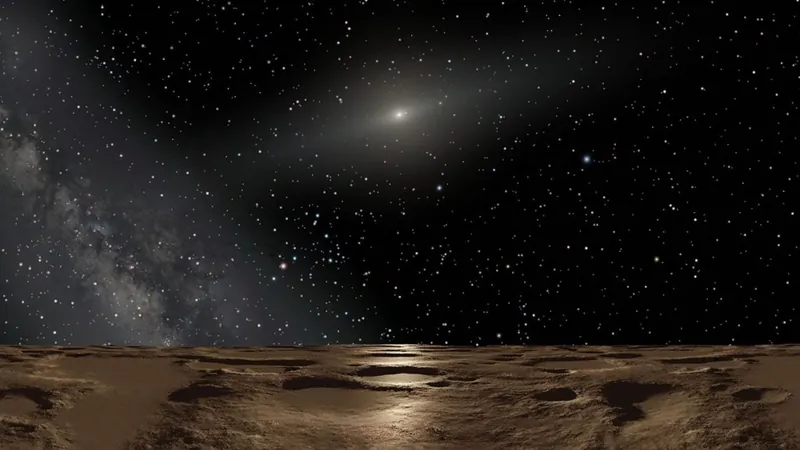
Could We Reach Sedna in Just 10 Years? Groundbreaking Propulsion Tech Points to a New Era in Space Exploration!
2025-07-01
Author: Wei Ling
A Journey to the Edge of the Solar System
Picture this: an ancient, icy world drifting over 8 billion miles from the Sun, a solitary dwarf planet known as Sedna, named after the Inuit goddess of the ocean. Discovered in 2003, Sedna's elongated orbit brings it closer to the Sun every 10,000 years, with its next perihelion set for July 2076. But astronomers are eager to seize this rare opportunity to survey Sedna and unlock secrets about the solar system's formation.
Revolutionary Propulsion Technologies at the Forefront
A dynamic team of Italian researchers is proposing audacious new mission concepts capable of reaching Sedna in just 7 to 10 years, utilizing groundbreaking propulsion technologies that could halve travel time compared to traditional space missions. Their paper, available on arXiv, spotlights two pioneering propulsion systems: a nuclear fusion rocket engine and an innovative twist on solar sailing.
Why Sedna Matters
Sedna isn’t just another distant object; it’s classified as a Trans-Neptunian object, orbiting far beyond Neptune with an eccentric trajectory that brings it as close as 7 billion miles and as far as an astounding 84 billion miles from the Sun. This makes Sedna an ideal target for a mission that could deepen our understanding of the Oort Cloud—the theorized reservoir of icy bodies surrounding our solar system.
Learning from the Pioneers
Although spacecraft like Voyager 1 and 2 have paved the way, covering distances of 15 billion miles since their 1977 launches, current tech estimates a grueling 20-30 years to reach Sedna through complex gravitational assists. The clock is ticking on this mission window, but the innovative propulsion methods from the new study promise a faster route.
The Future of Fusion Drives
At the heart of the research is the Direct Fusion Drive (DFD), being developed at Princeton University’s Plasma Physics Laboratory. This revolutionary engine would harness nuclear fusion reactions to generate thrust and power, potentially surpassing the capabilities of conventional rockets. The researchers assert, "The DFD presents a promising alternative...with high thrust-to-weight ratios and continuous acceleration. However, the challenge lies in ensuring plasma stability and longevity in the harsh environment of deep space."
Harnessing the Power of the Sun
The second propulsion concept builds on the experimental solar sail technology, which captures solar photons to propel a spacecraft. The researchers propose enhancing solar sails with thermally reactive materials that could boost propulsion through thermal desorption. When combined with gravitational assists from Jupiter, this method could allow a spacecraft to reach Sedna within seven years!
Brave New Exploration Awaits
While both mission plans come with their own set of challenges, they also promise unprecedented opportunities. The solar sail could lead to a rapid flyby of Sedna, while the DFD could enable a longer, more detailed exploration within Sedna’s orbit. Either mission would mark humanity’s first direct observations of this lost world and deepen our understanding of the far reaches of our solar system.


 Brasil (PT)
Brasil (PT)
 Canada (EN)
Canada (EN)
 Chile (ES)
Chile (ES)
 Česko (CS)
Česko (CS)
 대한민국 (KO)
대한민국 (KO)
 España (ES)
España (ES)
 France (FR)
France (FR)
 Hong Kong (EN)
Hong Kong (EN)
 Italia (IT)
Italia (IT)
 日本 (JA)
日本 (JA)
 Magyarország (HU)
Magyarország (HU)
 Norge (NO)
Norge (NO)
 Polska (PL)
Polska (PL)
 Schweiz (DE)
Schweiz (DE)
 Singapore (EN)
Singapore (EN)
 Sverige (SV)
Sverige (SV)
 Suomi (FI)
Suomi (FI)
 Türkiye (TR)
Türkiye (TR)
 الإمارات العربية المتحدة (AR)
الإمارات العربية المتحدة (AR)